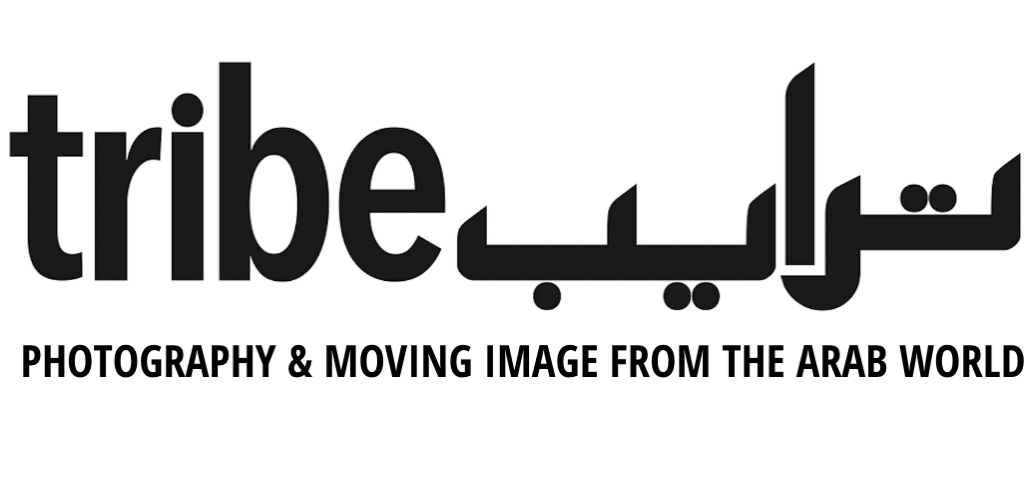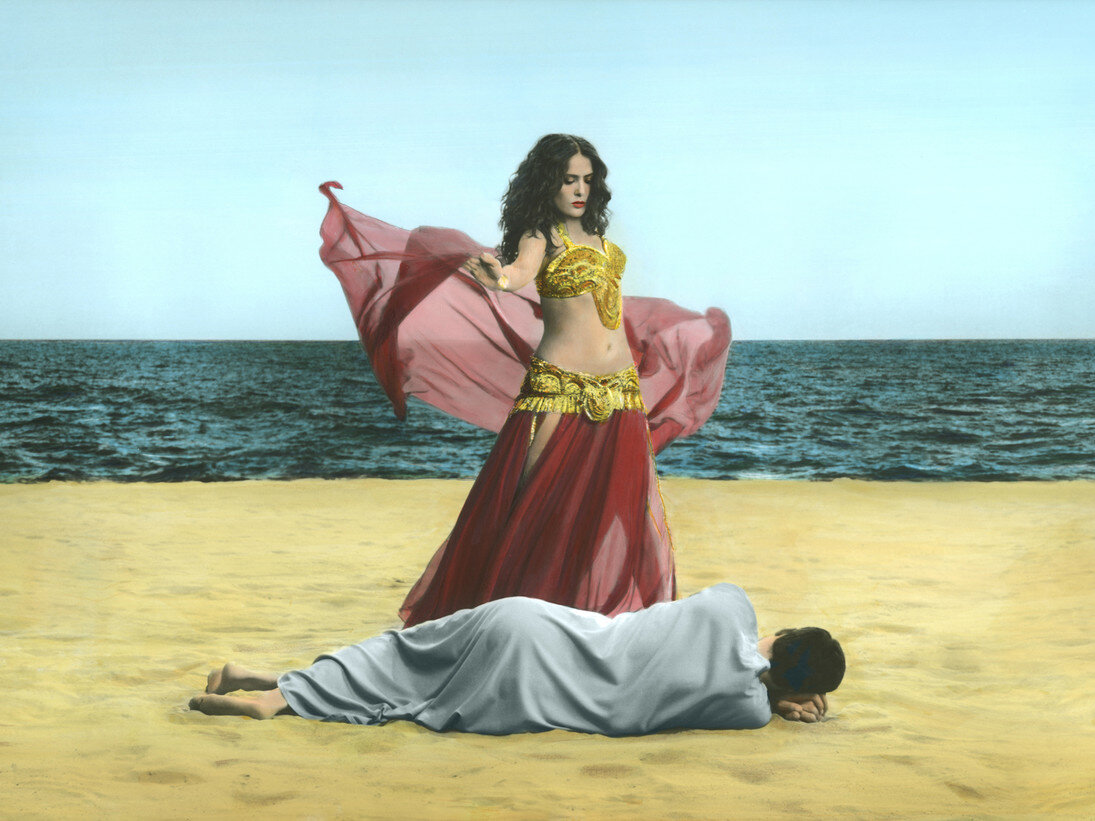Youssef Nabil: A Portfolio Review
From vintage photo processes to video evoking loss, displacement, memory and rebirth
Youssef Nabil, I Saved My Belly Dancer #XIII (2015), Hand colored gelatin silver print. Courtesy of the artist and The Third Line.
With text by Saira Ansari.
“In my work, the landscapes, people and emotions are a direct representation of how I perceive my journey in this life and my preoccupation with death. Over the years, my work has looked to illustrate my anxieties and my hopes. I often wonder about what it means to belong – to a place, a country, its people and its culture. What happens when one finds oneselves alienated and unable to relate with the changes that begin to occur? And what happens when one moves away?
I left Egypt in 2003 and since then I keep moving, traveling, and living in new places, all the time making work and getting inspired. I considered my first move like a kind of rebirth as I drifted between New York and Paris, and my return to visit Egypt afterwards left me even more isolated. My first video You Never Left, and many of my photographs, sketch a parallel between exile and death as a response to this. And a lot of my work, including the new video I Saved My Belly Dancer, is often meant as autobiographical, through which I expose deeply intimate and personal feelings which act as both reality and metaphor. My work provides a look into the constant death and re-birth of my identity, or those of the ‘characters’ I portray.” – Youssef Nabil
Youssef Nabil was born in Cairo, Egypt in 1972 where he grew up in a city caught in the romance of the golden age cinema of Hollywood on the Nile: a black and white film world in which he recalls the glamour and the elegance of an alternative realm. At a young age, Youssef discovered works by Egyptian-Armenian studio photographer Van Leo who, during the 40s and 50s, took portraits of famous homegrown personalities, ranging from politicians to singers. He met the photographer in 1992 and they remained close friends till Leo’s death in 2002, the relationship leaving a profound effect on the artist. In the meanwhile, Youssef went on to work as an apprentice photographer with renowned luminaries David LaChapelle and Mario Testino, which led to a unique training experience and exposure, encouraging his own creative growth. In 2003, Youssef left Egypt and since then has worked primarily from his studios in New York, Miami and Paris.
Youssef’s work over the years has come to be identified with his characteristic technique of hand painted silver gelatin photographs, which evoke the feel of the photo-novels and movie posters that accompanied Egyptian cinema more than half a century ago. It is a meticulous and time-consuming process that may take days, and the process combines vintage photographic practices with contemporary compositions and subtexts.
"When I was a kid, and while watching old Egyptian movies, I used to ask my mother about all the actors, where they all are," he recalls. "And mostly the answer was that they were all dead. It was a strange idea to me to watch and love all these beautiful dead people. I think it did something to my subconscious. Later on in my work when photographing people, I always think of how to make the moment eternal; before they die, or I die."
In the early 2000s, Youssef found recognition for his portrait and self-portrait series, with his images highlighting the extraordinary character of his models, distinguished artists, actors, singers and friends. International figures from the world of art, cinema and music became his subjects, with some prominent names including Tracey Emin, Natacha Atlas, Paulo Coelho, Nan Goldin, Bob Wilson and John Waters. Cairo’s fingerprints are all over his works, including famous Egyptian personalities such as the belly dancer Fifi Abdou, artist Ghada Amer, controversial crooner Shaaban Abdel Rehim and Nobel prize winning author Naguib Mahfouz. The portraits saw all these figures and more transported to Youssef’s world, each image offering a private glimpse into their persona, with compositions suggestive of stills from an imaginary film. At the same time, Youssef was also producing highly sensitive, and almost voyeuristic self-portraits. Taken over many years, these now number in the dozens, and have been taken in different locations across the world. These self-portraits are different from his other portraits, always presenting him in profile or from the back, or looking away from the lens, gazing into a faraway place. This places the viewer in a voyeur’s position, peeking into Youssef’s personal life.
In 2010, the artist known for his work combining photography and painting presented his first video You Never Left an 8-minute piece with the actors Fanny Ardant and Tahar Rahim set in an allegorical other place that is a metaphor of a lost Egypt. The video represented a major turning point in Youssef’s career, whose entire body of work thus far had been inspired by cinema. It revisited the aesthetic characteristics of Egyptian cinema’s golden age – the stars, Technicolor, the type of film stock – that inspired his own calling as an artist. You Never Left also had the same personal, diaristic quality that is found in his photographic work.
In 2013, Youssef exhibited Time of Transformation, which presented three new series that echoed the clash of archetypes that he felt defined the state of his present day home country. This body of work explored notions of transition and change as Youssef reflected upon an Egypt that is rapidly transforming and acquiring new ideals that he is unfamiliar with. The Veiled Women series features women from the fields of art, music and cinema, all adorning by the Mediterranean veil. In these portraits, Youssef ruminates about meanings associated with the veil now and how it was once worn in the Mediterranean cultures. By reincarnating the idea of the veil he loved, Youssef provides an allegory that is in sharp contrast to its connotation in the present day. The portraits echo a loss of innocence and the assimilation of new ideals that delineate between sex and religion. In The Last Dance series, change is explored through the medium of dance. Multiple images of belly dancers caught in whirling movements make up a kaleidoscopic visual frenzy. While the images are sensual in nature, it is the association of the ‘sexual’ with this art form that is now threatening its survival in Egypt. The slow disappearance of these belly dancers is significant of a new cultural identity that is following political shifts in the Egyptian mindsets. The Transformation panels look at the subtle change in the subject through seven stages. Almost staged as dramatic renditions of reactionary expressions, the work addresses how the artist is personally grappling with, and responding to, the transformations that are taking place within him.
Youssef is now working on a new body of work titled I Saved My Belly Dancer, a video which has taken years to plan, finance and film. Featuring Salma Hayek and Tahar Rahim, I Saved My Belly Dancer is a poetic depiction of Youssef’s fascination with belly dancers, and his anxiety over the disappearance of the art form that is unique to the Middle East. The 12-minute video is visually inspired by Egypt cinema from the 50s and touches upon Youssef's fraught relationship with his home country – both elements that inform a large aspect of his practice.
A sleeping man (Tahar Rahim) dreams of his old glamorous Egypt, which is disappearing. A last remaining belly dancer (Salma Hayek) comes to comfort him and tell him that his world has not vanished. She dances for him a last dance before he takes her with him to the American desert where he now lives. The video progresses without any dialogue, and the imagery is ubiquitous with surrealism and symbolism that makes Youssef’s work much more than unassuming reminiscence. Loss, displacement, memory, exile, new beginnings and rebirth continue to be a recurring theme in Youssef’s work. The video is a self-portrait of his history and relationship with Egypt – and his separation from it – as well as what is left of the past within memory; even if it is no longer a part of reality. The video also explores shifting perceptions of the position of women in the region, with the amplified sexualisation of their bodies a growing problem in the new social constructs. It is this, and the fear of losing an indigenous art form to time and changing ideologies, that inspired Youssef to work on I Saved My Belly Dancer, the second video in his career.
I Saved My Belly Dancer will be launched at The Third Line, with his solo exhibition planned for the beginning of 2016.


